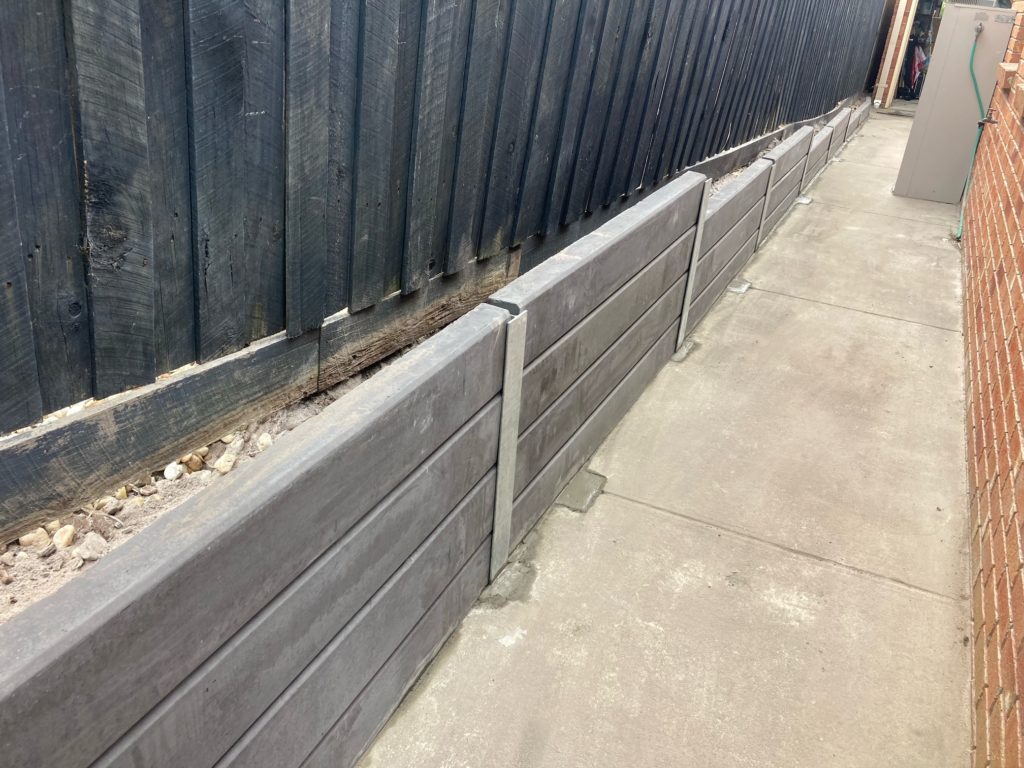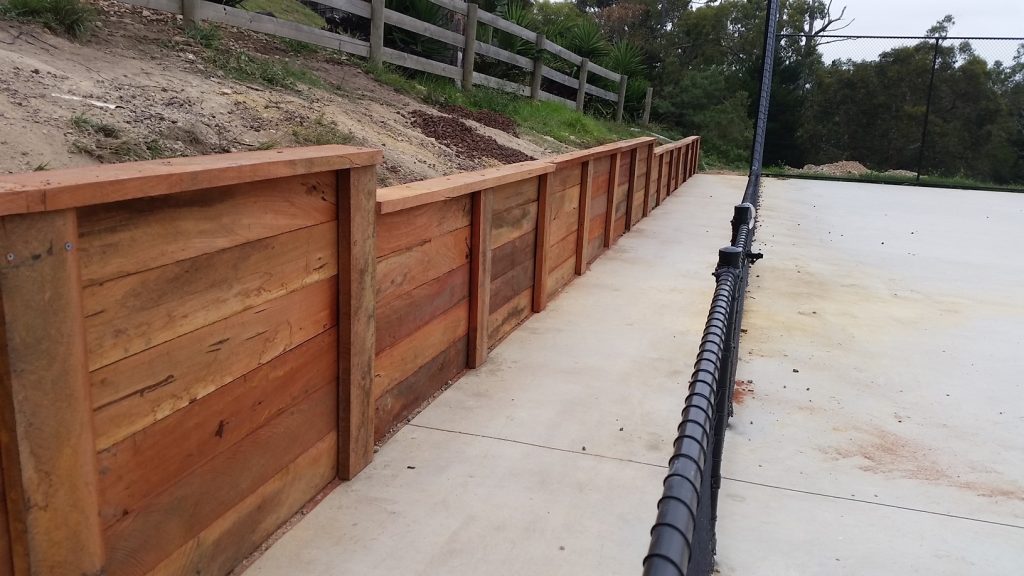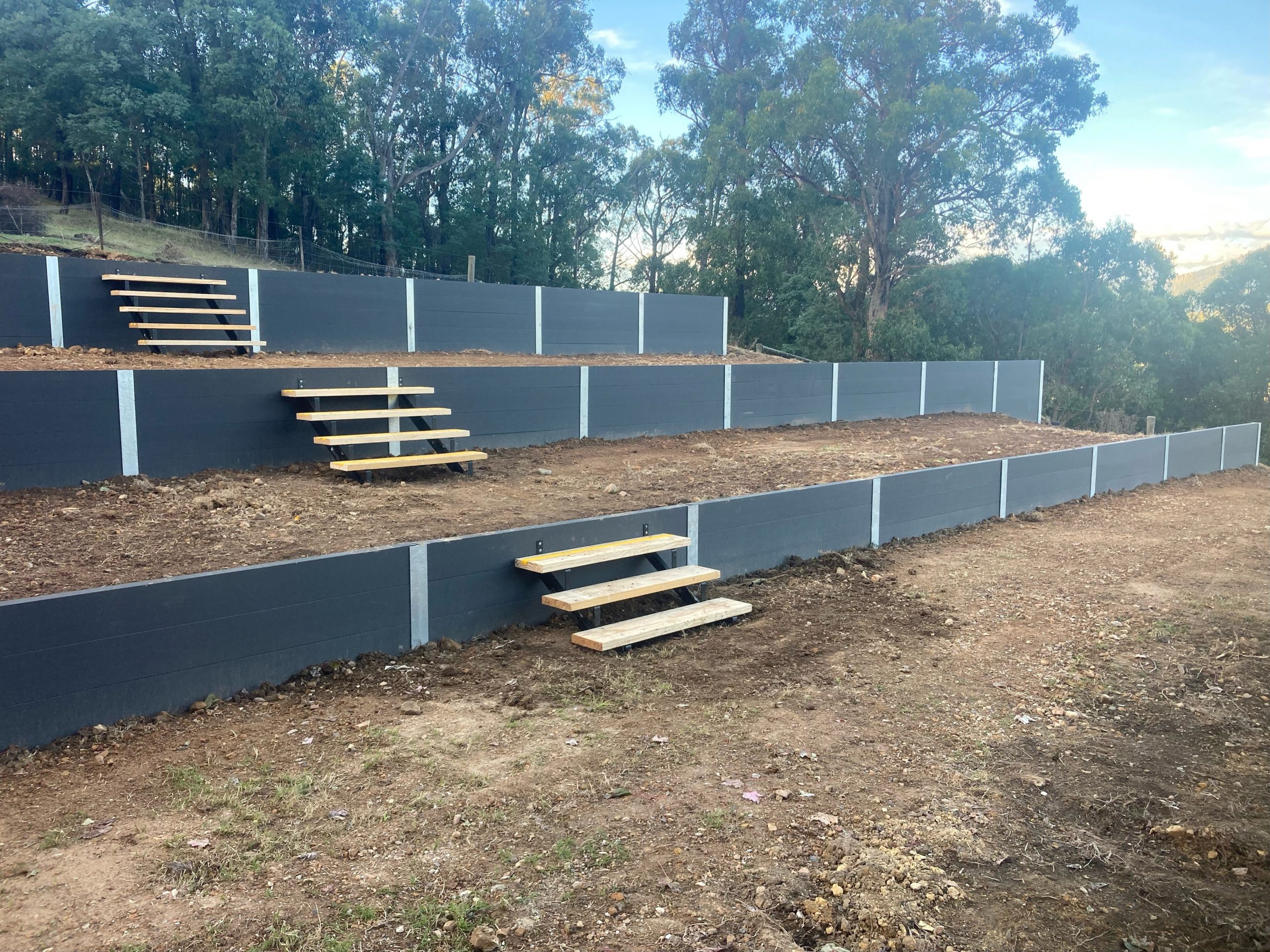Retaining walls serve a crucial role in managing soil erosion, creating levelled spaces, and enhancing the overall aesthetics of a landscape. When constructing a retaining wall, selecting the right building material is essential for its durability, stability, and longevity. In this article, we will delve into the materials we offer for building retaining walls and discuss their unique benefits.
Concrete
Concrete retaining walls offer a range of benefits that make them a popular choice for various applications. Here are some key advantages of concrete retaining walls:
Strength and Durability
Concrete is known for its exceptional strength and durability. Concrete retaining walls are capable of withstanding significant vertical and horizontal loads, making them ideal for holding back soil and controlling erosion. They provide long-lasting stability and structural integrity, minimising the need for frequent repairs or replacements.

Versatility in Design
Concrete retaining walls offer design flexibility, allowing for a wide range of sizes, shapes, and configurations. They can be customised to suit the specific needs of a project, whether it’s a small residential garden or a large-scale commercial development.
Low Maintenance
Once properly constructed, concrete retaining walls require minimal maintenance. Unlike timber walls that may need staining or sealing, concrete walls typically do not require regular upkeep. They are resistant to rot, decay, pests, and weathering, which reduces the need for frequent repairs or replacements.
Erosion Control
Concrete retaining walls effectively control soil erosion by holding back earth and preventing the shifting of slopes. They provide stability to landscapes on steep slopes, preventing landslides and minimising the risk of soil erosion due to heavy rainfall or natural forces. Concrete walls can be engineered to withstand the specific soil pressures and hydrological conditions of a site.
Aesthetic Appeal
Concrete retaining walls can be visually appealing, especially when incorporating decorative finishes, textures, or colours. With the use of decorative form liners, stamped patterns, or textured finishes, concrete walls can mimic the appearance of natural stone or other desired aesthetics. They can seamlessly blend with the surrounding landscape or architectural style, enhancing the overall visual appeal of the property.
Fire Resistance
Concrete is inherently fire-resistant, making concrete retaining walls a suitable choice for areas prone to bushfires. Their non-combustible nature provides an added layer of safety and protection for properties located in fire-prone regions.
When considering a concrete retaining wall, it is important to consult with us to ensure proper design, construction, and reinforcement based on the specific requirements of your project. We can assess factors such as soil conditions, water drainage, and potential loads to design a concrete retaining wall that meets your needs and complies with local regulations.
Timber
Timber retaining walls offer several benefits that make them a popular choice for landscaping projects. Here are some of the advantages of timber retaining walls:
Natural Aesthetics
Timber retaining walls add a warm and rustic aesthetic to outdoor spaces. The natural beauty of wood blends well with the surrounding environment and complements various landscaping styles. Timber walls can enhance the visual appeal of gardens, parks, and residential properties.

Versatility in Design
Timber offers design flexibility, allowing for various wall heights, shapes, and configurations. It can be cut and shaped to create curved or straight walls, accommodating different landscape contours. Additionally, timber walls can be stained or painted in different colours to match the overall design scheme or personal preferences.
Environmentally Friendly
Timber is a renewable and sustainable resource when sourced from responsibly managed forests. By using timber for retaining walls, you can contribute to environmentally conscious practices. Opting for pressure-treated wood with eco-friendly treatments helps enhance its resistance against decay, rot, and insect damage, prolonging its lifespan.
Easy Maintenance
Timber retaining walls require regular maintenance to ensure their longevity. However, maintenance tasks such as staining, sealing, and occasional repairs are relatively simple and can be performed without professional assistance. Regular inspections and addressing issues promptly can extend the life of the timber wall.
It’s important to note that timber retaining walls may have some limitations compared to other materials. They may be more susceptible to rot, moisture damage, and pest infestations if not properly maintained or treated. Consider the specific conditions of your project and consult with us to determine if a timber retaining wall is the best choice for your needs.
Choosing the right building material for your retaining wall is crucial for its longevity, functionality, and overall aesthetics. Consider the specific requirements of your project, including durability, maintenance, design preferences, and budget, to make an informed decision. Contact us today to discuss your retaining wall needs.


